Tao Shan
Multi-frequency Neural Born Iterative Method for Solving 2-D Inverse Scattering Problems
Sep 02, 2024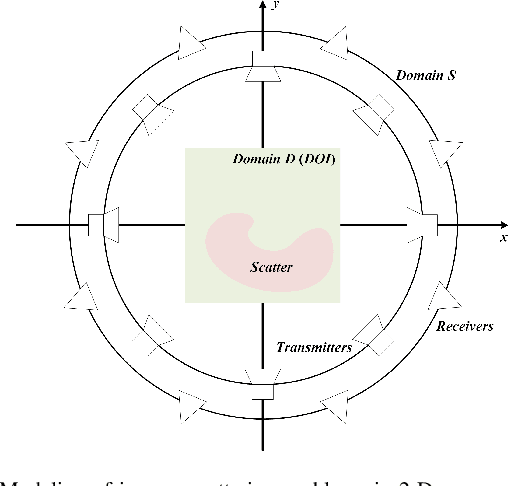
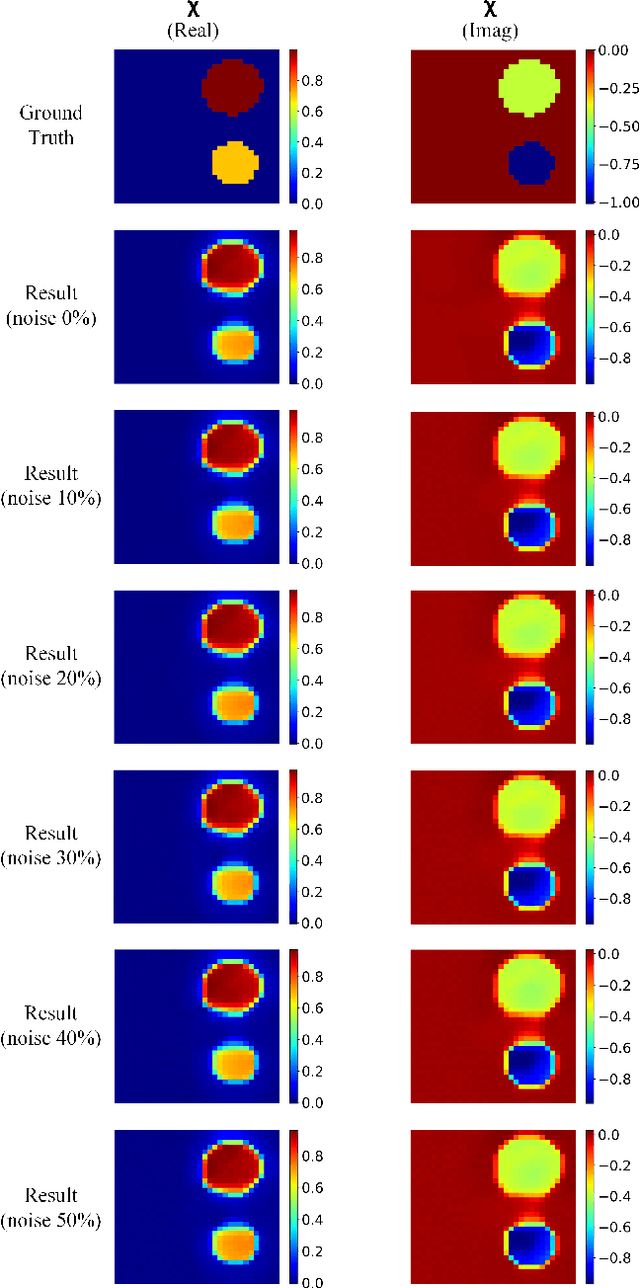
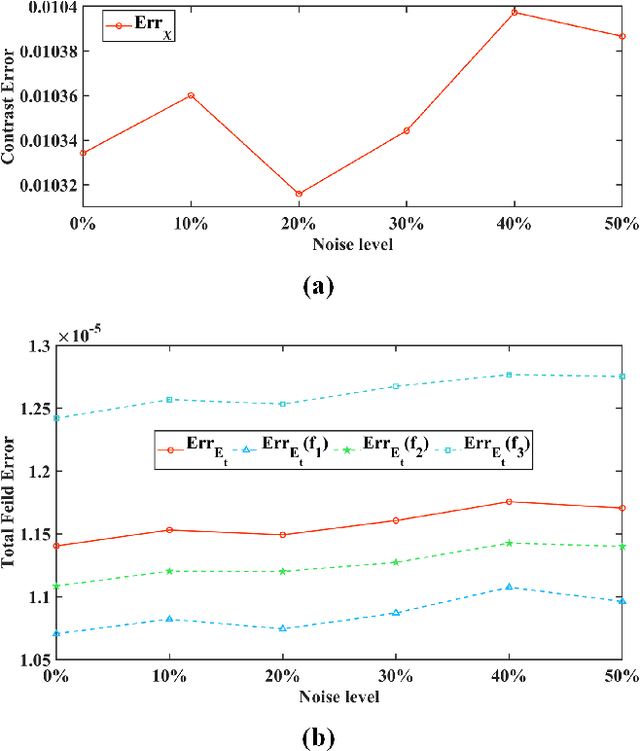
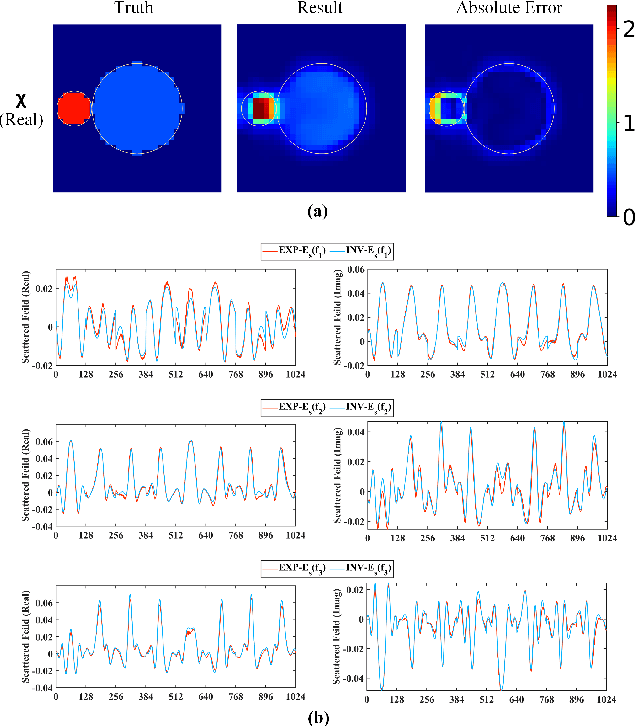
Abstract:In this work, we propose a deep learning-based imaging method for addressing the multi-frequency electromagnetic (EM) inverse scattering problem (ISP). By combining deep learning technology with EM physical laws, we have successfully developed a multi-frequency neural Born iterative method (NeuralBIM), guided by the principles of the single-frequency NeuralBIM. This method integrates multitask learning techniques with NeuralBIM's efficient iterative inversion process to construct a robust multi-frequency Born iterative inversion model. During training, the model employs a multitask learning approach guided by homoscedastic uncertainty to adaptively allocate the weights of each frequency's data. Additionally, an unsupervised learning method, constrained by the physical laws of ISP, is used to train the multi-frequency NeuralBIM model, eliminating the need for contrast and total field data. The effectiveness of the multi-frequency NeuralBIM is validated through synthetic and experimental data, demonstrating improvements in accuracy and computational efficiency for solving ISP. Moreover, this method exhibits strong generalization capabilities and noise resistance. The multi-frequency NeuralBIM method explores a novel inversion method for multi-frequency EM data and provides an effective solution for the electromagnetic ISP of multi-frequency data.
Extending Machine Learning-Based Early Sepsis Detection to Different Demographics
Nov 07, 2023Abstract:Sepsis requires urgent diagnosis, but research is predominantly focused on Western datasets. In this study, we perform a comparative analysis of two ensemble learning methods, LightGBM and XGBoost, using the public eICU-CRD dataset and a private South Korean St. Mary's Hospital's dataset. Our analysis reveals the effectiveness of these methods in addressing healthcare data imbalance and enhancing sepsis detection. Specifically, LightGBM shows a slight edge in computational efficiency and scalability. The study paves the way for the broader application of machine learning in critical care, thereby expanding the reach of predictive analytics in healthcare globally.
Ultraviolet Scattering Communication Using Subcarrier Intensity Modulation over Atmospheric Turbulence Channels
Dec 01, 2022Abstract:A closed-form non-line-of-sight (NLOS) turbulenceinduced fluctuation model is derived for ultraviolet scattering communication (USC), which models the received irradiance fluctuation by Meijer G function. Based on this model, we investigate the error rates of the USC system in NLOS case using different modulation techniques. Closed-form error rate results are derived by integration of Meijer G function. Inspired by the decomposition of different turbulence parameters, we use a series expansion of hypergeometric function and obtain the error rate expressions by the sum of four infinite series. The numerical results show that our error rate results are accurate in NLOS case. We also study the relationship between the turbulence influence and NLOS transceiver configurations. The numerical results show that when two-LOS link formulates the same distance, the turbulence influence is the strongest for long ranges and the weakest for short ranges.
Neural Born Iteration Method For Solving Inverse Scattering Problems: 2D Cases
Dec 18, 2021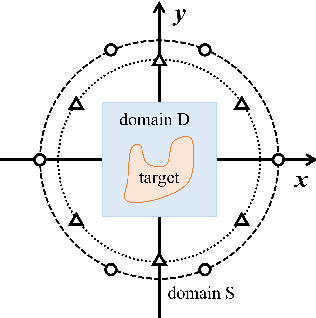
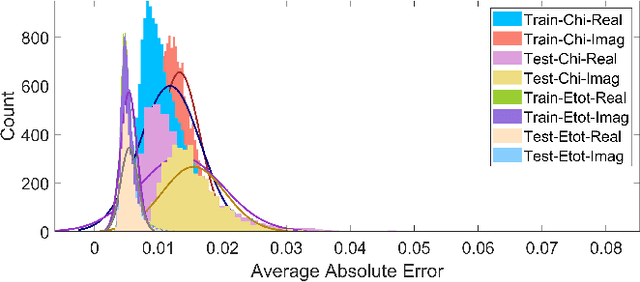
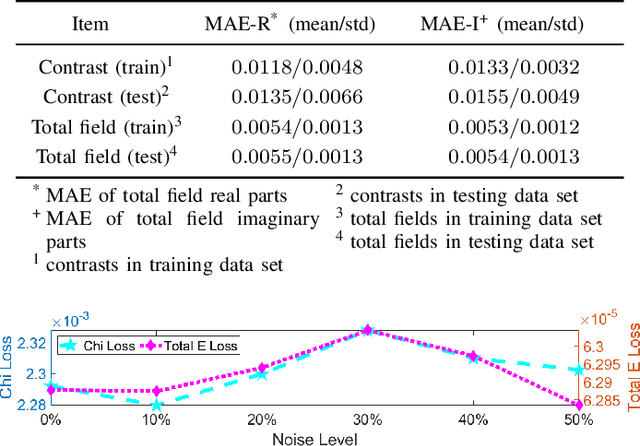
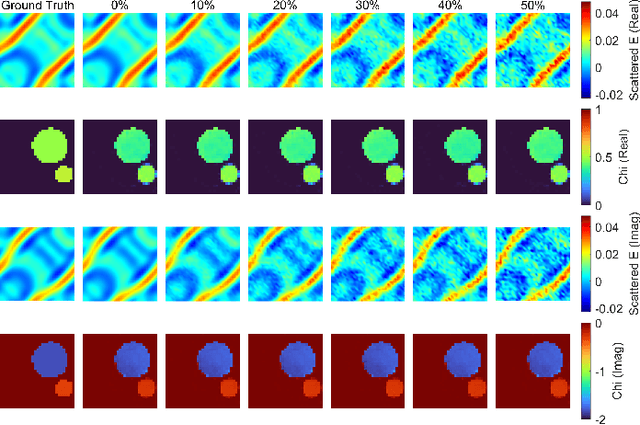
Abstract:In this paper, we propose the neural Born iteration method (NeuralBIM) for solving 2D inverse scattering problems (ISPs) by drawing on the scheme of physics-informed supervised residual learning (PhiSRL) to emulate the computing process of the traditional Born iteration method (TBIM). NeuralBIM employs independent convolutional neural networks (CNNs) to learn the alternate update rules of two different candidate solutions with their corresponding residuals. Two different schemes of NeuralBIMs are presented in this paper including supervised and unsupervised learning schemes. With the data set generated by method of moments (MoM), supervised NeuralBIMs are trained with the knowledge of total fields and contrasts. Unsupervised NeuralBIM is guided by the physics-embedded loss functions founding on the governing equations of ISPs, which results in no requirements of total fields and contrasts for training. Representative numerical results further validate the effectiveness and competitiveness of both supervised and unsupervised NeuralBIMs.
 Add to Chrome
Add to Chrome Add to Firefox
Add to Firefox Add to Edge
Add to Edge